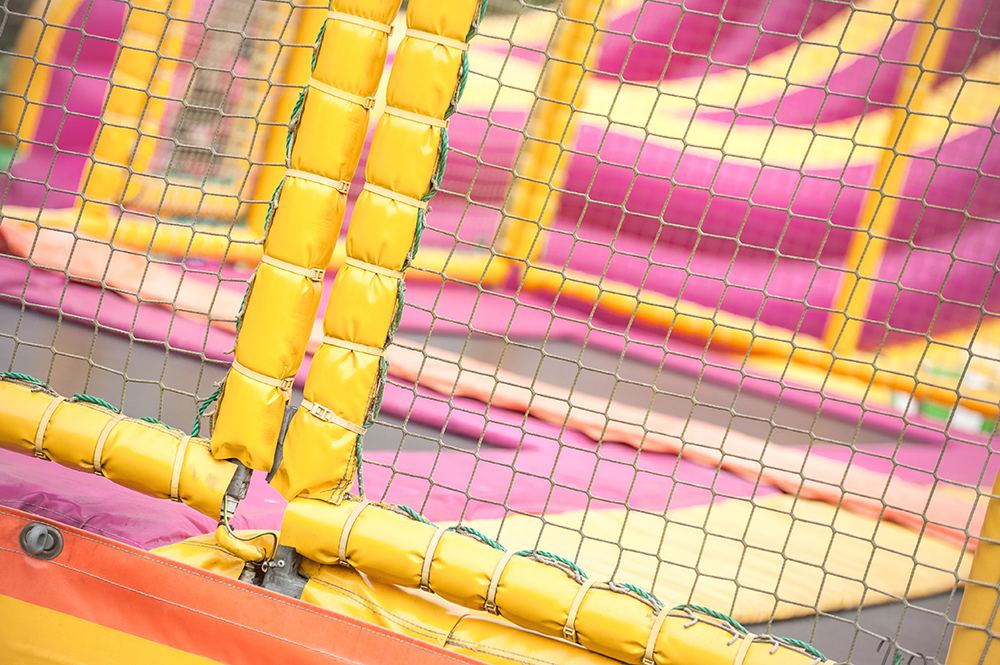How are standards increasing trampoline park safety?
BSI Staff Writer
Published date: |
|
Modified date: |
|
 How are standards increasing trampoline park safety?
How are standards increasing trampoline park safety?
Figures from the International Association of Trampoline Parks (IATP) reveal the number of trampoline parks in England and Wales to have increased from six in 2014 to nearly 120 in 2016.
Traditionally a popular activity for children, it is also one of the fastest growing forms of exercise for adults. As the popularity of trampoline parks increases, it’s vital the UK manages safety procedures going forwards to mitigate risk.
Although trampoline parks have to meet general health and safety legislation, at this time there are no specific rules for how they are built and run. Existing safety measures implemented by many trampoline parks include rules involving grip socks, hair worn tied back, no jewellery and a safety briefing.
PAS 5000, a new standard addressing the construction and operation of trampoline parks, will help constructors and operators introduce more robust safety protocols, leading to a decrease in the number of accidents.
PAS 5000 – what is it?
PAS 5000:2017 Specification for the construction and operation of a fixed indoor trampoline park has reached the approval process and is due to be published in March 2017. A Publicly Available Specification (PAS), the standardization document was developed to help address the industry’s collective concerns relating to accidents. It is the product of several key stakeholders including the International Association of Trampoline Parks, British Gymnastics and the Royal Society for Prevention of Accidents (RoSPA), as well as various operators, manufacturers, inspectors, insurers and health executives.
PAS 5000 addresses several key areas including the design and construction of the park. This covers everything from padding to signage. Ensuring that these safety signals are consistent across the park can help prevent accidents.
This is the first standard of its kind in the UK, although there is an existing standard, ASTM F2970-15, in the US. PAS 5000 is aligned with BS EN 13219, which addresses safety guidelines for the trampolines used in gymnastics, and it echoes the height guidelines and requirements for performance trampolines.
Ultimately, PAS 5000 is a way for trampoline parks to bounce back against safety concerns.
What does it cover?
The PAS addresses various areas including: construction, operations, health and safety, standard operational procedures and policies, employee training, dismount pits and lighting. Capacity is also an important feature of the PAS, as it’s thought that going overcapacity is a significant contributor to many accidents. These guidelines include a trampoline park capacity calculation which can help an operator work out the maximum number of users for each activity area within the park.
The new requirements take into account the park’s safety from build to use. They cover the full design of the park, from ensuring rooms are well lit to making sure that obstacles are not located within 1.5 m of where trampolines might be dismounted. The PAS also introduces recommended day-to-day operational safety checks such as checking the equipment to ensure there’s no visible wear and tear.
How will it help?
Although standards can help manage risk, trampoline parks are high-risk environments and no amount of safety measures can completely eliminate this. The ideal result from this PAS would be a tangible decrease in accidents as constructors and operators adopt the PAS, with users and regulators able to use the PAS as a benchmark for safety – giving them confidence in the park.
RoSPA’s Leisure Safety Manager, Dave Walker, said: ‘Trampoline parks have seen an explosive growth over the past few years and unfortunately some communities have seen a rise in A&E visits as a result. It’s heartening to see the sector organizing and sharing good practice and we are supporting the International Association of Trampoline Parks and the British Standards working group to draft nationally recognized operational guidelines. This should provide a clear framework for parks and regulators to work towards.’
Sources:
http://www.bbc.co.uk/news/uk-31072793
https://standardsdevelopment.bsigroup.com/projects/baa6b356b2752b756c2bc91ae8f90a3d
http://www.rospa.com/play-safety/advice/en1176-equipment-standard/
http://www.bbc.co.uk/news/uk-scotland-edinburgh-east-fife-31535814
Click here to provide feedback

